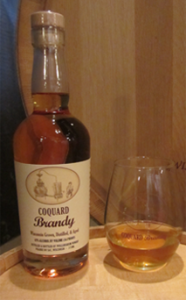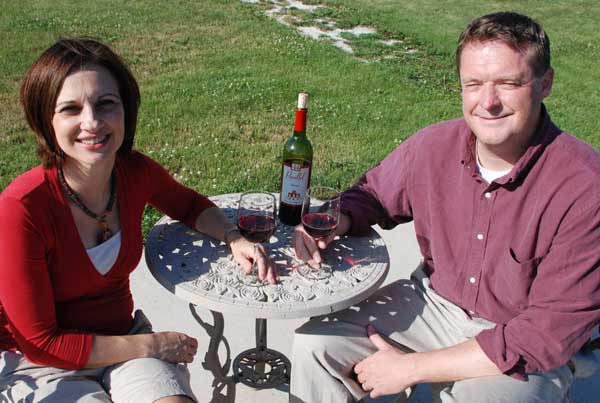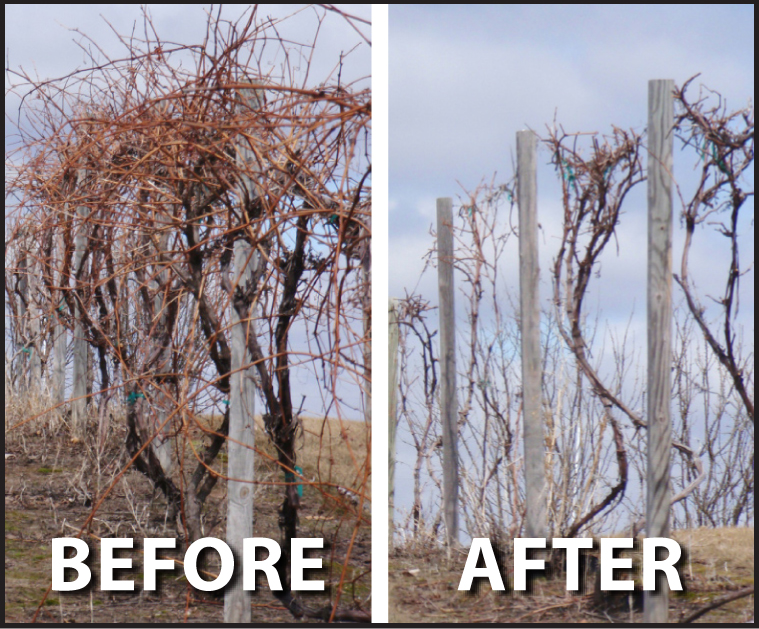Downstream from St. Paul Is the St. Pepin Grape
The St.Pepin wine grape is partially named for the Lake Pepin, a 40 square mile lake in the Mississippi River. Most of the St. Pepin wine made in the U.S. is produced in the two states on either side of Lake Pepin, Minnesota and Wisconsin.
Like many creations of legendary grape breeder Elmer Swenson, St. Pepin is a wonderful contribution to cold-climate grape varieties. Whether it is used as a blender or an ice wine, St. Pepin can stand up to harsh Midwest winters. It can be picked early or left on the vine after freezing temperatures set in, giving winemakers many options that other grapes don’t offer.
The first commercial planting of St. Pepin was at Wollersheim Winery, Wisconsin’s first winery. Wollersheim’s cuttings came from Elmer Swenson in 1976 as an experimental planting. The amount of St. Pepin grown on their estate has increased from one acre in 1989 to over four acres today with two more acres newly planted for the future. According to winemaker Philippe Coquard, the increased acreage is due in part to the additional St.Pepin that goes into producing the winery’s new Coquard Brandy.

Newly released Coquard Brandy is made from St. Pepin and LaCrosse and aged for two years in custom Wisonsin barrels.
Wollersheim produces three wines with St. Pepin: A semi-dry white wine blended with La Crosse called Eagle White, a sweet ice wine, and the Brandy which also contains La Crosse. According to Coquard, St. Pepin is extremely versatile, and has been picked early at 19 brix for their semi-dry wine (which he describes as a Pinot Grigio style), later at 23 brix for their late harvest style, or even later at 35 brix for their ice wine style. ‘The wine is mellow, fruity, and gentle. It has depth; we love it,” Coquard said.
Wollersheim’s St. Pepin is grown on a high wire cordon trellis system and is own-rooted. Coquard states that he has had less pressure from pests with this variety than with the other hybrids he grows. He said St. Pepin is also less prone to sour rot (bunch rot) than hybrid reds such as Marechal Foch. He adds that for the ice wine, St. Pepin can be left longer on the vine because it is the only variety that can take the freezing and thawing of Wisconsin winters.
One interesting quirk of St. Pepin is that it cannot self-pollinate. It is usually planted with alternating rows of other grape varieties to make wind pollination possible. Wollersheim grows one row of La Crosse, followed by three rows of St. Pepin throughout the vineyard, with the La Crosse rows on the dominant side of the wind. Coquard prefers La Crosse, which he also received from Elmer Swenson in 1984, and Prairie Star as pollinators.
At Cannon River Winery in Minnesota, John Maloney is also making St. Pepin from his 1200 vines. Maloney makes his St. Pepin as an off-dry wine, which he compares to Sauvignon Blanc. ‘It makes great ice wine too because it’s tough,” he said. Maloney describes his St. Pepin as having aromas of citrus, particularly grapefruit and pear, with a clean and crisp flavor.
See related story: Cannon River Shoots for the Stars
Cannon River’s first St. Pepin grapes were planted in 2001. They are grown on their own roots and on two different trellis types: VSP and Four-Arm Kniffin. Maloney states that Geneva Double Curtain has also been used to grow this variety. For pollination, he says that just about any variety can be used, even wild vines.
Cannon River’s St. Pepin vines have experienced fewer problems with pests than with other varieties such as La Crescent or Marquette. Maloney states that they run a standard spray program, with an occasional experience of downy mildew.
At Danzinger Vineyard and Winery in Alma, Wisconsin, David Danzinger is making two styles of wine from his St. Pepin grapes. The first is a late harvest wine, which he describes as sweet with apple and pear aromas and flavors. The other is what he describes as a cryogenic ice wine, called Thin Ice. It is a sweet wine, that has similar aromas but also a honey finish.
For Danzinger’s two styles of St. Pepin wines, the releases are alternated; late harvest one year, cryogenic ice the next. According to Danzinger, the late harvest is made by harvesting the grapes when the brix is in the mid-twenties. The wine is fermented dry, then back-sweetened. He describes this as a German style of winemaking.
For Danzinger’s Thin Ice, which he stresses is not a true ice wine, the grapes are harvested, frozen and crushed while still frozen. While true ice wines are left longer on the vine, Danzinger prefers this method to harvesting in the snow. He says that this cryogenic St. Pepin ice wine makes a heavier bodied wine with a honey finish.
Danzinger’s 500 St. Pepin vines are grown on VSP style trellises. La Crosse is used as a pollinator, with an alternating pattern of four rows of St. Pepin followed by two rows of La Crosse. According to Danzinger, the first vines were planted in 2003, with additional vines added in 2005.
Danzinger says that his St. Pepin wines appeal to sweet wine drinkers or to people who are new to wine. ‘They are easy to drink; very smooth, excellent dessert wines or just to drink by themselves.” He adds that their St. Pepin wines always sell out with production of about 2,000 bottles of late harvest, and about 1,000 bottles of Thin Ice. Both wines are bottled in 375ml bottles.
According to a profile written by Minnesota grower Lisa Smiley, St. Pepin was bred by Elmer Swenson and released in 1986. It is an interspecific hybrid with V. labrusca, V. lincecumii, V. riparia, V. rupestris, and V. vinifera in its heritage. The berries are spherical and small to medium in size. The clusters are medium to large in size, and conical in shape.




